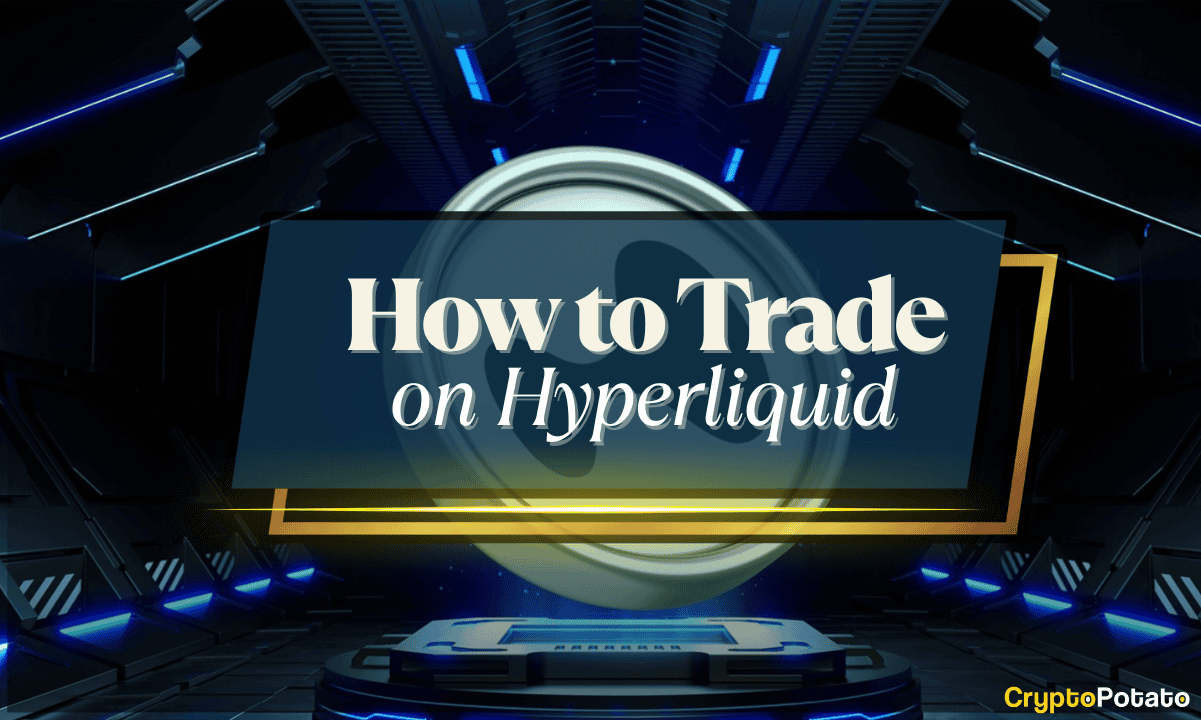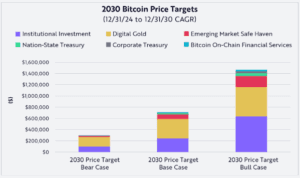
The Definitive Handbook: A Comprehensive Step-by-Step Guide
Hyperliquid stands out as a leading decentralized trading platform within the cryptocurrency space. It utilizes a proprietary blockchain designed to deliver speed, scalability, and an effortless user experience. This infrastructure blends the efficiency of centralized exchanges with the safety and transparency that decentralized finance offers.
Whether you are a novice stepping into trading or transitioning from standard crypto exchanges, Hyperliquid provides an easy method for trading perpetual contracts directly from your wallet—eliminating intermediaries, gas fees, and complex sign-up processes. This guide serves as a complete walkthrough for beginners, detailing everything from wallet setup to executing your first trade, while also covering order types, risk management, and how to leverage the platform’s capabilities.
Key Highlights:
- Hyperliquid mimics the user experience of centralized exchanges within a decentralized framework.
- There’s no need for sign-ups, KYC procedures, or gas fees—just connect your wallet to trade.
- Only USDC serves as trading collateral.
- The platform offers perpetual futures with margin and leverage options.
- Hyperliquid employs a fully decentralized order book instead of relying on AMMs.
Quick Navigation
Overview: What is Hyperliquid?
Hyperliquid is recognized as a decentralized cryptocurrency derivatives exchange noted for exceptionally fast, low-latency trading that operates without traditional intermediaries or centralized oversight. Its user interface is reminiscent of platforms like Binance or Bybit but is built on its unique blockchain, ensuring complete transparency, self-custody, and composability.
In contrast to many other decentralized exchanges that depend on automated market makers, Hyperliquid boasts an entirely on-chain order book that matches the performance and functionality of centralized options. This advantage is substantial, especially since traders do not incur gas fees, making it more economical than other on-chain alternatives.
The core offering includes perpetual futures contracts across a wide range of cryptocurrencies, enabling traders to execute both long and short positions entirely on-chain while accessing tools comparable to those found on centralized exchanges.
Key Features of Hyperliquid:
- Decentralized order book
- High throughput and performance
- No fees for gas when trading
- Advanced perpetual futures options
- Self-custody capabilities
- Custom blockchain (HyperEVM)
Key Features for Trading on Hyperliquid
Hyperliquid is a decentralized cryptocurrency exchange that operates independently of centralized control. It’s non-custodial, meaning your assets are stored on-chain, not in a centralized account. You fully manage and control your funds. The unique decentralized order book mimics centralized exchange structures while leveraging the benefits of decentralized finance.
No KYC or registration is necessary; simply launch the Hyperliquid trading application and connect your non-custodial wallet to begin trading. You won’t have to worry about extensive KYC processes or potential fund freezes.
Built on its proprietary blockchain, Hyperliquid is optimized for low latency and high-speed transactions. Typical confirmation times are under a second, providing a user experience that rivals centralized exchanges, all while remaining decentralized.
Zero gas fees for trading mean you can conduct transactions without incurring extra costs, making it a highly efficient choice for both high-frequency traders and new users.
The platform accommodates both cross-margin and isolated margin modes, features generally associated with centralized exchanges.
How to Trade on Hyperliquid: A Step-by-Step Approach
Here’s a concise guide for beginners to navigate trading on Hyperliquid.
Key Points:
- Acquire a compatible wallet to begin.
- Fund your wallet using the Hyperliquid bridge.
- USDC is the sole currency accepted for trading.
- Familiarize yourself with the trading interface before placing orders.
- Understand order types and risk parameters.
Setting Up Your Wallet
As Hyperliquid is a decentralized exchange, you’ll need an EVM (Ethereum Virtual Machine) compatible wallet. There are various options available, with MetaMask being the most widely used. Other alternatives include Coinbase Wallet, Rabby, and WalletConnect.
If you are unfamiliar with MetaMask, setup is straightforward and should take just a few minutes.
Using the Hyperliquid Bridge: Adding Funds
After setting up your wallet, you’ll need to add funds to your account, commonly referred to as “bridging.” Hyperliquid exclusively accepts USDC as trading collateral, so you’ll need to acquire that.
The Hyperliquid Bridge, powered by deBridge, facilitates this process. The steps are simple:
- Visit deBridge and connect your wallet.
- Select the source chain and desired token (must be USDC).
- Choose Hyperliquid as the destination.
- Confirm the transaction.
If you lack on-chain funds, consider withdrawing from a centralized exchange or purchasing crypto using MetaMask’s credit card integration.
Once the bridging process is complete, your funds will arrive in a few minutes, allowing you to start trading by connecting your wallet to Hyperliquid.
The only supported trading asset for margin is USDC; any other cryptocurrencies must be converted into USDC before you can deposit.
After launching the Hyperliquid app, connect your wallet by navigating to the top right corner and clicking on “Connect.” Choose your wallet and sign the transaction, which incurs no gas fees.
Once connected, locate the “Deposit” button at the bottom right of the interface. Choose your depositing chain, asset, and amount, then confirm the transaction. Your funds should be available shortly.
Understanding the Hyperliquid Trading Interface
With funding in place, it’s time to familiarize yourself with the trading interface before placing your first order. We have numbered the key sections for your convenience.
-
Chart: Here, you track price movements and switch between trading modes. Adjacent to the trading pair label, a dropdown menu allows you to select your desired trading mode. You can also utilize standard charting tools such as drawing resistance lines and adding indicators.
-
Order Book: This section displays market depth alongside current orders and trades. HyperDash is an informational dashboard designed for Hyperliquid that provides vital data on market conditions, including directional bias and open interest.
-
Order Placement: This area is where trades are executed. Hyperliquid supports various order types akin to those found in centralized exchanges, enhancing its standing as a leading decentralized platform.
The interface includes fields for selecting margin types and adjusting leverage settings. Cross margin means shared collateral across positions, while isolated margin allows risk limitation for individual trades.
Now, let’s discuss the four common order types available for use on Hyperliquid.
-
Market Orders: These allow you to instantly execute a trade at the market’s best available price. Note that using market orders incurs higher taker fees.
-
Limit Orders: Utilize this type to trade at a predetermined price. Once the market hits your specified limit price, the order begins executing. Be aware that partial fills may occur due to liquidity constraints, and these orders incur lower maker fees.
-
Stop-Limit Orders: These are useful for setting profit or loss limits. You establish a ‘stop price’ to trigger a limit order when reached, effectively controlling your position.
-
Stop-Market Orders: Similar to stop-limit orders but designed to execute market orders upon reaching a specified price.
- Position Tracking: This section is essential to manage and monitor your current positions. You can see unrealized profits and losses, entry prices, funding fees, and liquidation prices.
Executing Your First Trade on Hyperliquid
With a comprehensive understanding from this guide, you’re ready to place your inaugural trade using a market order. Here’s a visual summary of the process:
Start by specifying your desired leverage. For example, if you select 5x leverage, you might trade with around $24 available at a 5x long position on HYPE/USDC. You’ll see your liquidation price and order information once you input your parameters. Confirm by clicking “Place Order,” and your trade executes immediately. Monitor your position in the corresponding section, where you can easily close it if needed.
Risk Management and Liquidations
Trading on Hyperliquid offers various tools to manage risk effectively. One of the primary hazards in leveraged trading is liquidation, which occurs when your position must close due to insufficient collateral.
For example, opening a 10x long position implies an expectation of rising prices. If prices fall and you lack sufficient collateral to support your position, liquidation occurs. Typically, a 10% price decline could lead to liquidation, resulting in a loss of the margin posted.
To safeguard against this, consider two strategies:
-
Utilize Stop-Loss Orders: Implement stop-limit or stop-market orders to automatically exit trades at specified prices to limit losses.
-
Manual Position Management: Some traders prefer not to use automated stop-losses due to fears of market manipulation but instead opt for substantial collateral and manual oversight of their positions.
Trading Fees on Hyperliquid
Understanding trading fees is crucial for anyone interested in trading on Hyperliquid, and below is a simplified overview.
The fee structure is based on a rolling 14-day trading volume, calculated daily.
Spot Trading Fees
Best Practices for Trading on Hyperliquid
While this guide has concentrated on perpetual contracts, here are some general best practices applicable to any trading on Hyperliquid.
Consider reviewing broader guides on cryptocurrency trading tips for additional insights.
-
Start Small: Using leverage amplifies both gains and losses. For newcomers, it’s wise to stick to lower leverage (e.g., 2x-3x) and trade smaller amounts to gain experience without significant risk.
-
Use Isolated Margin to Minimize Risk: Isolated margin restricts risk to only the assigned trade’s margin if the trade falters, unlike cross-margin which risks your entire balance.
-
Know Liquidation Mechanics: Stay informed about your liquidation price and avoid reaching it through proactive risk management.
-
Trade with a Clear Plan: Emotions should not dictate trading decisions. Define your entry, exit, and risk parameters before entering a trade and stick to your strategy.
Target Audience for Hyperliquid
Hyperliquid is suitable for both novice and experienced traders. However, individuals lacking familiarity with Web3 technologies may encounter a steeper learning curve. Despite this, the Hyperliquid team has streamlined onboarding, making it relatively straightforward, especially without the hassle of traditional registration processes.
Advantages and Disadvantages of Trading on Hyperliquid
Advantages:
- Genuine decentralization with performance akin to centralized exchanges
- Rapid transaction times
- No trading gas fees
- Advanced trading tools
- User-friendly interface
- Strong on-chain analytics capabilities
Disadvantages:
- A bit of a learning curve for absolute newcomers
- Risks associated with the protocol
Common Questions (FAQ)
How does Hyperliquid operate?
Hyperliquid functions as a decentralized trading platform on its own blockchain, melding user-friendly exchange interface features and swift trade execution with an entirely decentralized framework.
Can I trade on Hyperliquid from the USA?
Currently, users in the U.S. face restrictions on trading through Hyperliquid. While some suggest using a VPN, this may violate the platform’s terms and is done at your own risk.
Is Hyperliquid available for trading on Coinbase?
No, HYPE tokens associated with Hyperliquid are not tradable on Coinbase as per its official information.
What wallets are compatible with Hyperliquid?
Hyperliquid is compatible with all EVM-based wallets, including MetaMask, Rabby, and WalletConnect among others.
On which blockchain does Hyperliquid operate?
Hyperliquid is established on its own blockchain, known as HyperEVM, designed for high transaction speeds and throughput.
How does Hyperliquid generate revenue?
Hyperliquid primarily earns through its fee structure, with a significant portion of the generated fees used to repurchase HYPE tokens from the market.
Can I use a Phantom wallet with Hyperliquid?
Currently, connecting a Phantom wallet to Hyperliquid is not possible; you’ll need an EVM-compatible wallet like MetaMask or Rabby.
Does Hyperliquid have a mobile app?
At present, only a web application exists, with no mobile app available.
How to Trade on Hyperliquid: Overview
Hyperliquid offers an extensive array of trading tools within a completely decentralized environment, enabling users to enjoy similar features to centralized exchanges without relinquishing control over their assets. While beginners may find the initial process challenging, once funds are bridged, trading becomes straightforward. It’s evident why Hyperliquid has captured a significant share of the market for perpetual contracts in the decentralized finance ecosystem.



















Post Comment